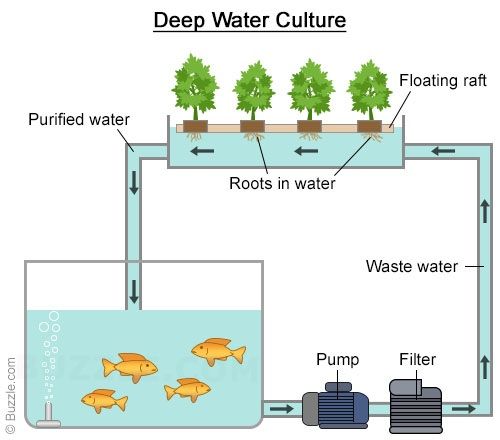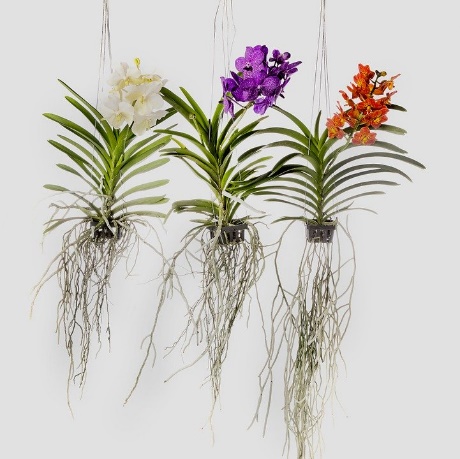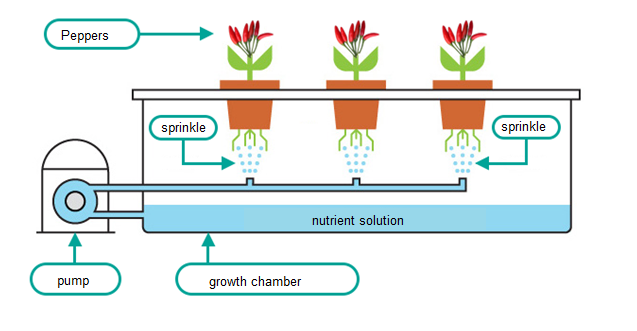The idea of hydroponic cultures is nothing new. As early as 1627, Francis Bacon, the famous philosopher proposed to grow vegetables away from the soil. He found that plants placed in pure water did not grow as well as those in non-pure water. He then cited nine elements necessary for growth which should be in the water so that the plant could grow out of the soil.
Later, many researchers developed techniques that led to what we have nowadays: water with nutrients circulating through the roots of plants so that they can absorb them.
NASA itself was interested in this kind of research in order to create systems to allow the cultivation of food in a possible colonization of planets.
The growth of the hydroponic industry has been very great, involving technologies which increasingly allow to obtain greater performance, such as, for example, LED lighting, environmental control and much more.
Several variations of this technique are growing, leading to interesting results, especially when electronic technology is available.
One is aquaponics, which consists of combining aquaculture (fish farming) with hydroponics (growing plants in the same water). In this case, what is done is to feed the fish that would then produce the natural fertilizer for the plants.
In the image, a system which can even be homemade in which the aquarium fish produce the fertilizers that, dissolved in the water, feed the hydroponic culture.

The other form of plant cultivation is aquaponics or aeroculture in which plants grow in the air, without an additional means such as soil or water for the roots.
The idea is interesting: the roots are suspended in the air and the solution rich in nutrients that the plant needs for its growth is sprayed through a spray system. It is claimed that in this system the plants are free from attack by pests and diseases, growing in a much healthier way.

Another interesting point to be noted is that studies show that, being suspended in the air, the oxygen needed at the root (a region called the rhizosphere) is easier to be absorbed, which is important for healthy growth.
In Figure 3, there is an example of a simple system.

Finally, in the specialized literature, readers interested in the subject can find extensive documentation on the Internet.
Where Electronics Comes in
In the different types of cops we analyzed, we have the presence of pumps, the need to control temperature, humidity, the flow of liquids and depending on the location, an artificial lighting system and even the circulation of ambient air.
This involves the possibility of using a multitude of electronic resources and therefore very interesting products for placing on the market.
We can have from small kits for crops made in apartments, like seasonings and vegetables, to devices for larger crops for commercial consumption, such as in restaurants and even horticultural establishments, and finally industrial production to supply larger customers.
We then have a multitude of products which can be used in projects involving applications in vertical culture. We can give some examples based on what Mouser Electronics has in its storage.
We remind you that for more sophisticated products such as motor controls, spray solenoids, stepper motors, ambient sensors, we have the development and evaluation boards which facilitate the work of those who want to create a product or their own application.
- Microcontrollers - are the basis of the controls, interfacing the sensors, motors, solenoids, LEDs, etc.
- LEDs - there are specific types for horticulture, providing greater efficiency in the use of energy and emitting wavelengths according to the needs of the cultivated plants.
- Sensors - designers can count on a huge range of sensors, such as humidity, pressure, temperature, lighting, etc.
- Power supplies - for all devices, allowing better management of the energy consumed.
- Supporting circuits and components such as heating elements, fans, active, passive electronic components and integrated circuits.
See components for practical solutions at www.mouser.com.



